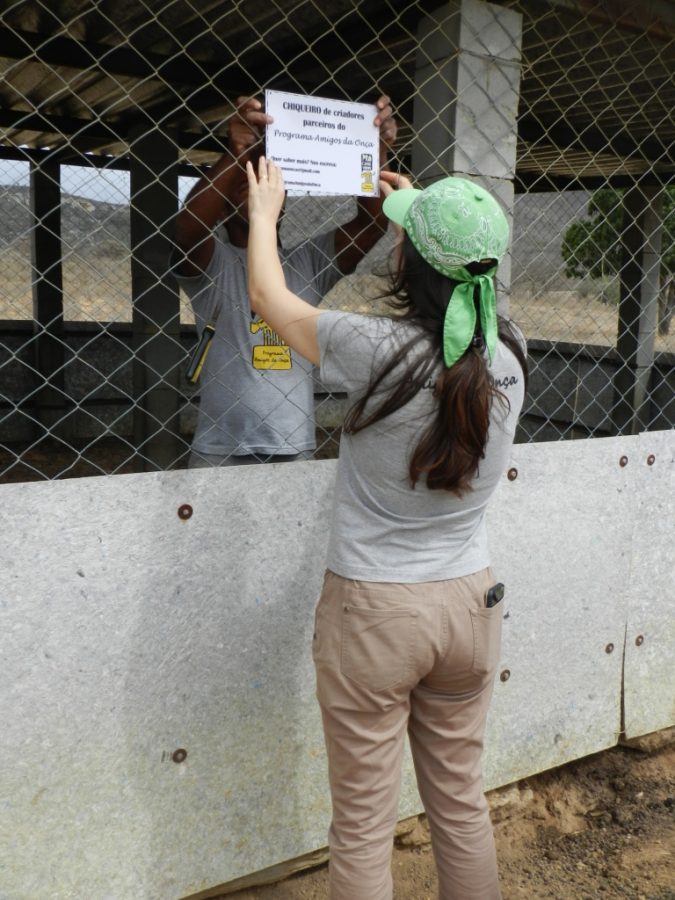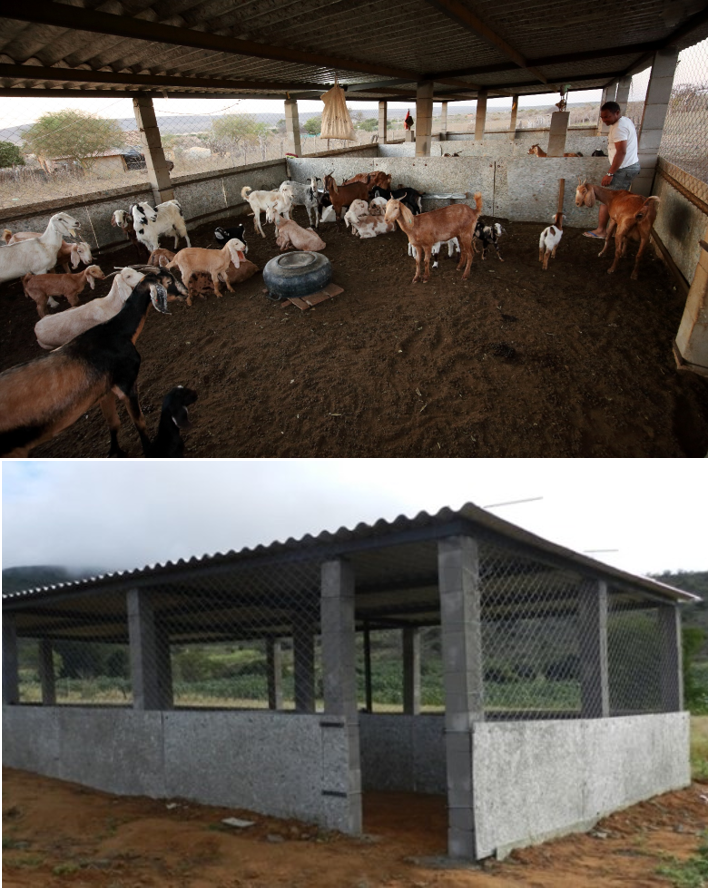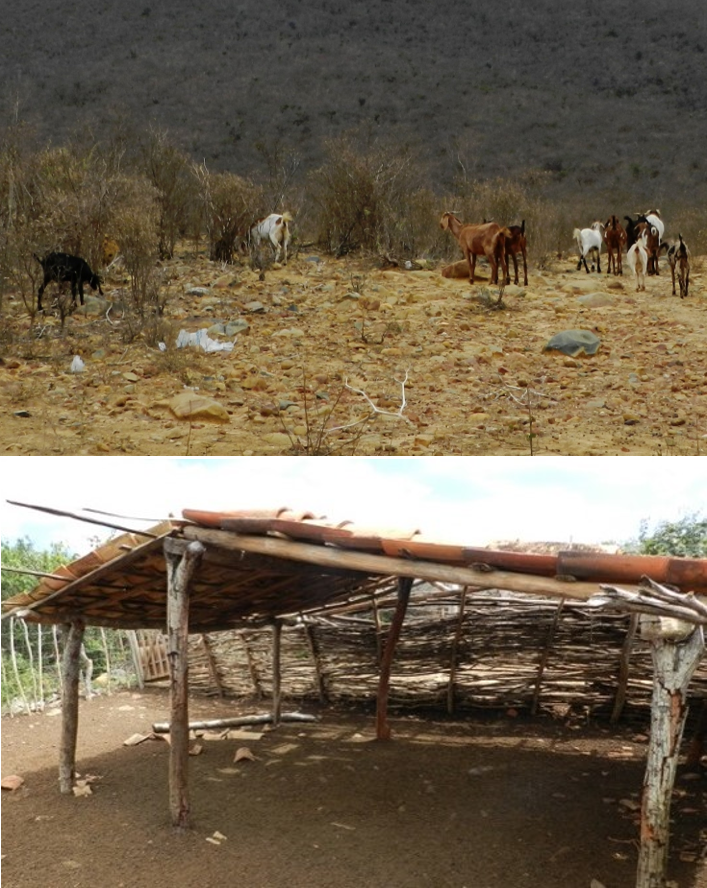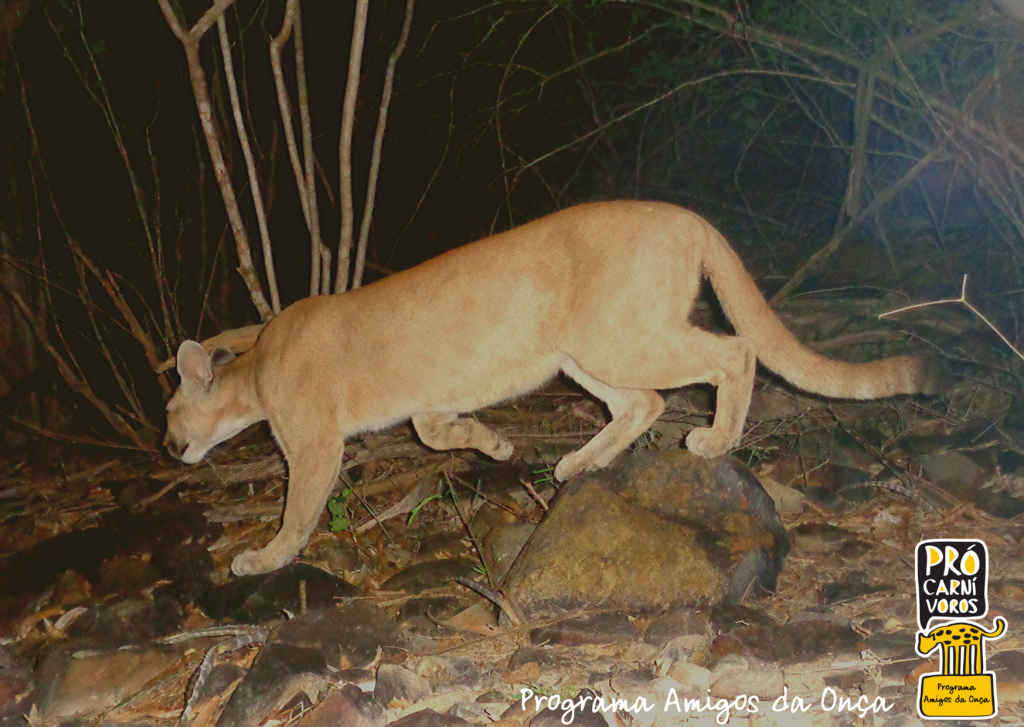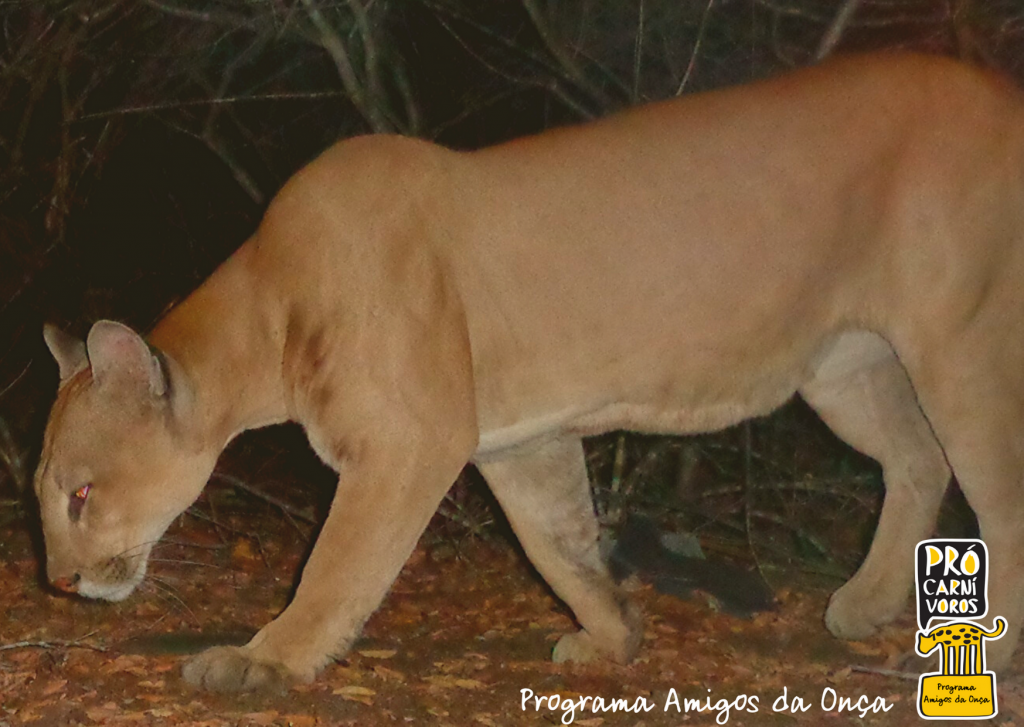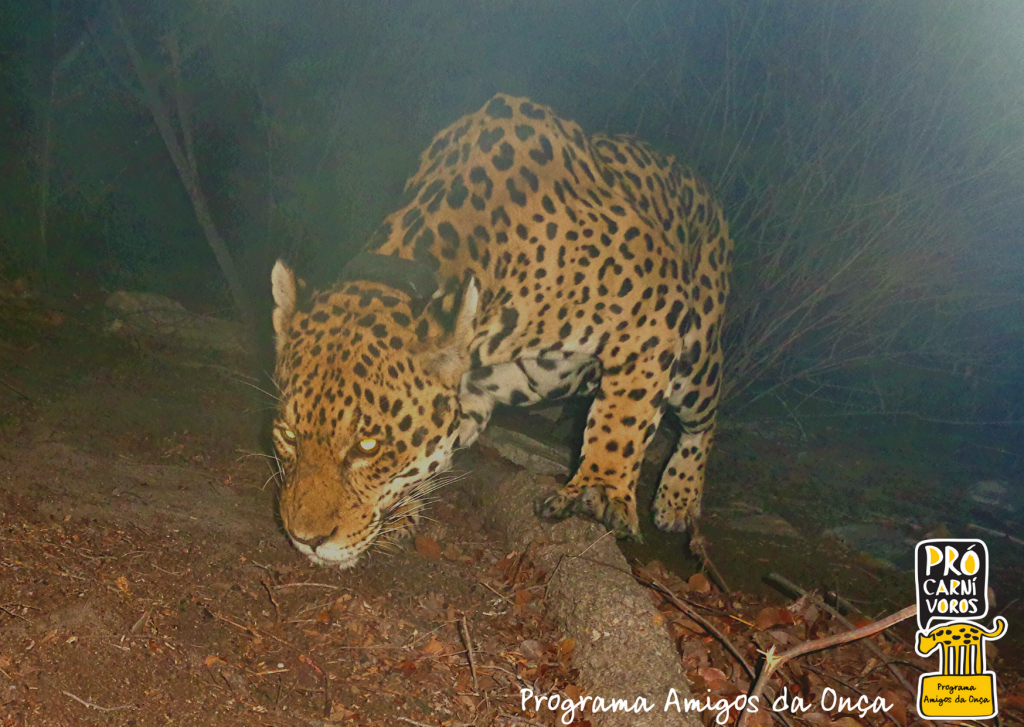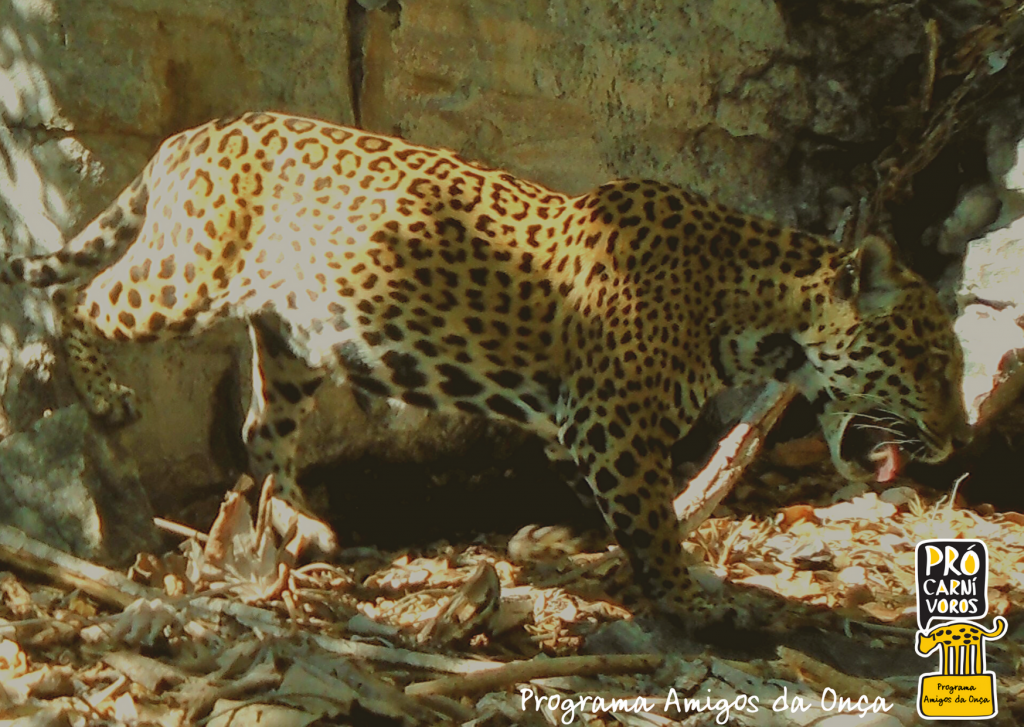Program Big Cats’ Friends: Big Predators and Sociobiodiversity in the Caatinga
The Caatinga, a seasonally dry tropical forest, is home to the country’s largest terrestrial predators, jaguars (Panthera onca) and pumas (Puma concolor); however, their population is fragmented and declining. In this ecoregion, these species occur sympathetically in most of their home range, considering that both are persecuted and, most of the time, slaughtered, mainly in retaliation for the predation of livestock (goats, sheep and cattle).
Recent conservation status evaluation considers jaguars and pumas in the Caatinga as “critically endangered” and “endangered”, respectively.
The Program Big Cats’ Friends: Big Predators and Sociobiodiversity in the Caatinga carries out pioneering actions to reduce conflicts between people and those predators in this biome. The Program proposes a new management of herds and, by using the conceptual and methodological framework of human dimensions, investigates the perceptions, tolerance, knowledge and feelings that the locals, ‘sertanejos’, (adults and children) have towards jaguars and pumas. The Program also collects data to study the ecology and biology of these big cats and their natural prey to support conservation actions of these species.
The overall objective of the Program is to promote conservation of the jaguar and puma in the Caatinga biome through the following:
- Attain ecological and biological knowledge of this species to support conservation actions in the spectrum of the Conservation Unit (UCs) of Boqueirão da Onça and surroundings;
- Development of alternative and sustainable means of survival to ease poverty, which, most of the time, is the reason of conflict between human and wildlife;
- Development and encouragement of favorable behavior towards jaguars and pumas conservation and their habitat among farmers, men and women, volunteers, institutions and schools in the Boqueirão da Onça and surroundings;
- Reduction of domestic animals’ predation by jaguars and pumas through the change in herd management systems including the construction of anti-predators animal sheds.
The study area, Boqueirão da Onça, has approximately 9,000 km² and is located in the north of Bahia state, encompassing six municipalities (Sento Sé, Campo Formoso, Juazeiro, Umburanas, Morro do Chapéu and Sobradinho).
Due to the richness of its fauna, flora, archaeological records, paleontological material and important caves, such as Toca da Boa Vista (biggest one in Latin America), the area is of “extremely high” importance for biodiversity conservation. Therefore, in April 5, 2018, Chico Mendes Institute for Biodiversity and Conservation– ICMBio and the Ministry of Environment – MMA created two protected areas (UCs). One for full protection, the Boqueirão da Onça National Park (347 thousand ha – Decree Law nº 9337), and the other for sustainable use, the Environmental Conservation Area of Boqueirão da Onça (505 thousand ha – Decree Law nº 9336), which encompasses the Wild Life Zone Toca da Boa Vista (11 thousand ha).
The Program will continue to help fill the gap in knowledge about jaguars and pumas in the Caatinga. It will also support decision-making for conflict reduction, conservation actions for the two species in the Northeast Brazil and the region´s biodiversity, as well as, to enable a better life quality for small rural producers, partners in conservation and coexistence with these big cats.
PUBLICATIONS
Medium and large sized mammals of the Boqueirão da Onça, North of Bahia State, Brazil
Experiências com mamíferos carnívoros na Caatinga
CONNECT WITH THE PROGRAM
https://www.facebook.com/ProgramaAmigosdaOnca/
https://www.instagram.com/amigosonca/
CONTACT
programaoncas@procarnivoros.org.br
Operational area
caatinga-en
Responsible team
Responsible Team
Team:
Msc. Carolina Franco Esteves – Biologist
Dr. Cláudia Sofia G. Martins – Agronomist
Dr. Maísa Ziviani Alves Martins – Biologist
Msc. Francine Schulz – Biologist
Daiana Jeronimo Polli – Biology student
Fieldwork Assistant:
Ismael A. da Silva
Mariano Neto F. de Jesus
The Caatinga, a seasonally dry tropical forest, is home to the country’s largest terrestrial predators, jaguars (Panthera onca) and pumas (Puma concolor); however, their population is fragmented and declining. In this ecoregion, these species occur sympathetically in most of their home range, considering that both are persecuted and, most of the time, slaughtered, mainly in retaliation for the predation of livestock (goats, sheep and cattle).
Recent conservation status evaluation considers jaguars and pumas in the Caatinga as “critically endangered” and “endangered”, respectively.
The Program Big Cats’ Friends: Big Predators and Sociobiodiversity in the Caatinga carries out pioneering actions to reduce conflicts between people and those predators in this biome. The Program proposes a new management of herds and, by using the conceptual and methodological framework of human dimensions, investigates the perceptions, tolerance, knowledge and feelings that the locals, ‘sertanejos’, (adults and children) have towards jaguars and pumas. The Program also collects data to study the ecology and biology of these big cats and their natural prey to support conservation actions of these species.
The overall objective of the Program is to promote conservation of the jaguar and puma in the Caatinga biome through the following:
- Attain ecological and biological knowledge of this species to support conservation actions in the spectrum of the Conservation Unit (UCs) of Boqueirão da Onça and surroundings;
- Development of alternative and sustainable means of survival to ease poverty, which, most of the time, is the reason of conflict between human and wildlife;
- Development and encouragement of favorable behavior towards jaguars and pumas conservation and their habitat among farmers, men and women, volunteers, institutions and schools in the Boqueirão da Onça and surroundings;
- Reduction of domestic animals’ predation by jaguars and pumas through the change in herd management systems including the construction of anti-predators animal sheds.
The study area, Boqueirão da Onça, has approximately 9,000 km² and is located in the north of Bahia state, encompassing six municipalities (Sento Sé, Campo Formoso, Juazeiro, Umburanas, Morro do Chapéu and Sobradinho).
Due to the richness of its fauna, flora, archaeological records, paleontological material and important caves, such as Toca da Boa Vista (biggest one in Latin America), the area is of “extremely high” importance for biodiversity conservation. Therefore, in April 5, 2018, Chico Mendes Institute for Biodiversity and Conservation– ICMBio and the Ministry of Environment – MMA created two protected areas (UCs). One for full protection, the Boqueirão da Onça National Park (347 thousand ha – Decree Law nº 9337), and the other for sustainable use, the Environmental Conservation Area of Boqueirão da Onça (505 thousand ha – Decree Law nº 9336), which encompasses the Wild Life Zone Toca da Boa Vista (11 thousand ha).
The Program will continue to help fill the gap in knowledge about jaguars and pumas in the Caatinga. It will also support decision-making for conflict reduction, conservation actions for the two species in the Northeast Brazil and the region´s biodiversity, as well as, to enable a better life quality for small rural producers, partners in conservation and coexistence with these big cats.
PUBLICATIONS
Medium and large sized mammals of the Boqueirão da Onça, North of Bahia State, Brazil
Experiências com mamíferos carnívoros na Caatinga
CONNECT WITH THE PROGRAM
https://www.facebook.com/ProgramaAmigosdaOnca/
https://www.instagram.com/amigosonca/
CONTACT
programaoncas@procarnivoros.org.br
Região de atuação
caatinga-en
Equipe responsável
Responsible Team
Team:
Msc. Carolina Franco Esteves – Biologist
Dr. Cláudia Sofia G. Martins – Agronomist
Dr. Maísa Ziviani Alves Martins – Biologist
Msc. Francine Schulz – Biologist
Daiana Jeronimo Polli – Biology student
Fieldwork Assistant:
Ismael A. da Silva
Mariano Neto F. de Jesus


